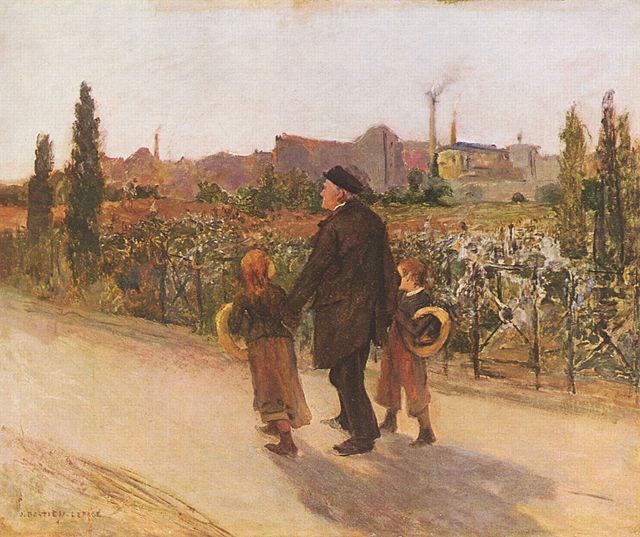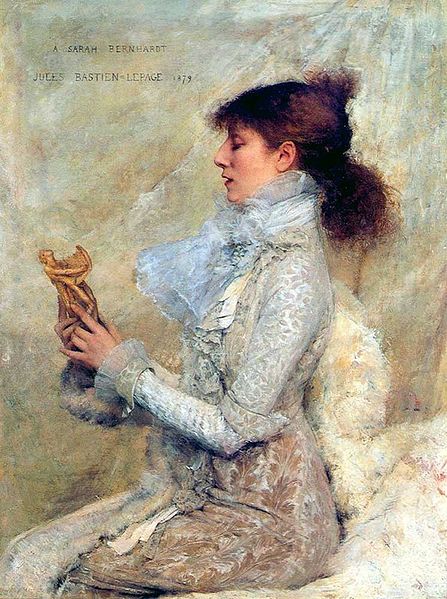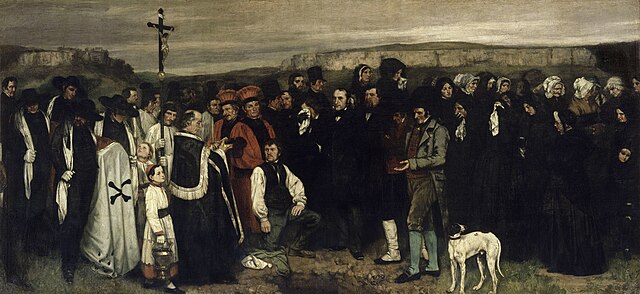Jules Bastien-Lepage was a French painter closely associated with the beginning of naturalism, an artistic style that grew out of the Realist movement and paved the way for the development of impressionism. Émile Zola described Bastien-Lapage's work as "impressionism corrected, sweetened and adapted to the taste of the crowd."
Self-Portrait
Auguste Rodin, Jules Bastien-Lepage, 1887, on display at the Iris & B. Gerald Cantor Center for Visual Arts on the Stanford University campus in Stanford, California
All Souls' Day, c. 1882
Portrait of Sarah Bernhardt, 1879
Realism was an artistic movement that emerged in France in the 1840s, around the 1848 Revolution. Realists rejected Romanticism, which had dominated French literature and art since the early 19th century. Realism revolted against the exotic subject matter and the exaggerated emotionalism and drama of the Romantic movement. Instead, it sought to portray real and typical contemporary people and situations with truth and accuracy, and not avoiding unpleasant or sordid aspects of life. The movement aimed to focus on unidealized subjects and events that were previously rejected in art work. Realist works depicted people of all classes in situations that arise in ordinary life, and often reflected the changes brought by the Industrial and Commercial Revolutions. Realism was primarily concerned with how things appeared to the eye, rather than containing ideal representations of the world. The popularity of such "realistic" works grew with the introduction of photography—a new visual source that created a desire for people to produce representations which look objectively real.

James Abbott McNeill Whistler, Nocturne: Blue and Gold – Old Battersea Bridge (1872), Tate Britain, London, England
Bonjour, Monsieur Courbet, 1854. A Realist painting by Gustave Courbet.
Gustave Courbet, A Burial At Ornans, 1849
Jean-François Millet, The Gleaners, 1857








